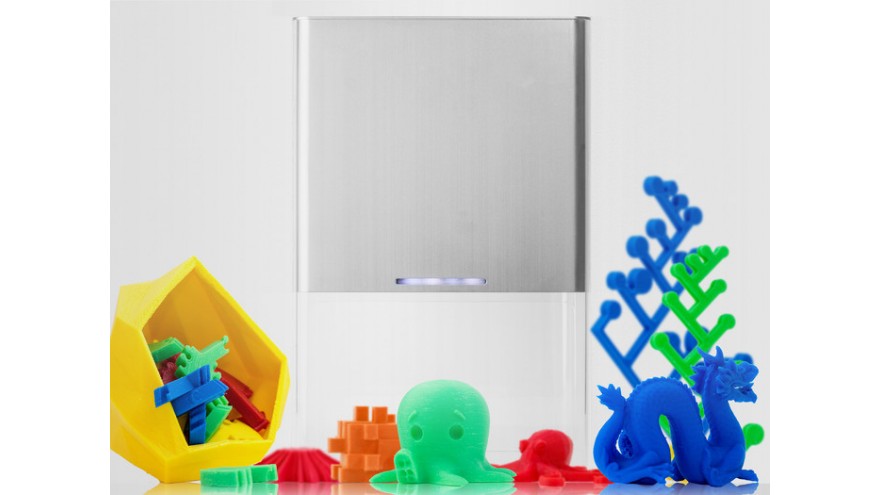A $1.5M Kickstarter Project Fails To Backers
In a convoluted note to backers (below), the company’s founder states that the company is exploring raising additional capital yet seems to say it does not expect to be able to fulfill the remaining Kickstarter orders even with additional cash.
Pirate3D Inc raised nearly $1.5M on Kickstarter in 2013, promising a 3D printer that anyone can use. A total of 3,520 backers pledged money to the project including 3,389 who pledged over $300 to eventually get a printer. But as of now, 60 percent of the orders have still not been fulfilled and it seems unlikely that in the end backers will get a refund or their product.
This is why we cannot have nice things.
Investing is a risky business. Not everything pans out. No matter how it’s billed, crowdfunding through sites like Kickstarter, Indiegogo and GoFundMe is an investing scheme and carries unexpected risks for the general consumer.
Crowdfunding removes barriers and makes it easier to get products into production. And that’s great. Raising money needed to get a product from an idea to a product is hard and takes a lot of time. But often over the course of fundraising and moving things into production, issues arise and are addressed before promises are made to consumers. With crowdfunding, promises are made before the challenges are known.
The Pirate3D Buccaneer raised a blockbuster $1.438M on June 29, 2013 — a record amount at the time. The first printers were supposed to ship to backers in February 2014. That didn’t happen. As of September 2014, only 200 products had shipped. And a year later, despite selling the product through retail channels, 60% of backers are still waiting.
Sometimes Kickstarter and Indiegogo projects fail. There’s risk associated with crowdfunding. Pledging money towards a project is not a guarantee that the project will be fulfilled as promised. Kickstarter changed its terms of service last October to give project creators a way out of fulfilling their obligations as long as certain criteria had been meet including posting a report showing how funds were used and stating what is preventing the project from finishing as planned. But that terms of use only applies to project that launched after October 17, 2014. Pirate3D’s Buccaneer printer was funded the previous year and subject to a different set of rules.
Pirate3D must fulfill its orders or issue a refund, according to Kickstarter’s terms of use agreed by the company. It’s cut and dried. If neither conditions are met, backers have the right to sue the creator, according to a conversation I had with a Kickstarter representative.
The Pirate3D founders did not respond to TechCrunch’s request for comment. [Update: After the article was published the founders returned my email and stated that they still on plan on fulfilling the Kickstarter orders. When? They didn’t say.]
This black and white policy is what caused Kickstarter to craft a new set of terms of use that gives project creators a backdoor out of their obligations. Simply put, sometimes things do not work out. And it seems like that’s the case with the Pirate3D Buccaneer Printer.
From what I can tell the founders and employees of Pirate3D didn’t set out to scam customers. They produced an amazing product. I reviewed a Buccaneer printer and found it a joy to use. It’s truly a fantastic home 3D printer. The founders simply failed at building a viable company around the product.
The founders said in a note to Kickstarter backers that the company is sourcing new rounds of investment and found that investors want the new cash to only be used as working capital and not to fulfill previous obligations. TechCrunch also received communication from Pirate3D noting that the company is already looking at a deal.
Kickstarter monitors submissions and leans on its vast community to flag projects that do not abide by the site’s terms of service — like a facial razor that uses lasers. The Skarp netted over $4 million on Kickstarter but was pulled from the site after the creator failed to provide suitable imagery. The Skarp quickly made its way to Kickstarter-competitor Indiegogo where it’s raised, at time of publication, $217k.
Crowdfunding must not be confused with purchasing a product. Instead, consumers need to know that they are doing someone a favor and help fund their dream whether it be producing a hair metal album or building a company around a 3D printer. There are countless examples where project creators fulfill their obligations and return the favor in the form of a product or service. Yet it’s projects like the Buccaneer printer from Pirate3D that cast doubts on the promise of crowdfunding.





Comments